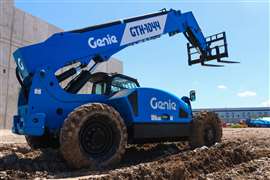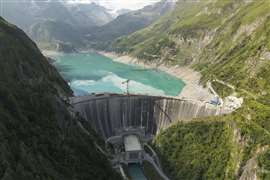Read this article in Français Deutsch Italiano Português Español
CECE: How can manufacturers stay on top of expanding global regulations?
09 June 2025
Expanding global regulations now demand stricter chemical controls, substance tracking, and life cycle assessments. How can manufacturers keep up?

The global regulatory landscape is undergoing an unprecedented surge in legal obligations that significantly impact Original Equipment Manufacturers (OEMs) efforts to make compliant construction equipment available worldwide.
Major markets, like the European Union, the United States and China, are expanding their chemical control laws, while other regions and countries are introducing new restrictions.
Furthermore, with the recently introduced regulatory requirements, the scope broadens beyond commonly known chemical safety rules, introducing new concepts such as tracking and reporting certain substances and materials, implementing and adhering to extended producer responsibility laws and life cycle assessment reporting standards.
Rapid development
In Europe, the approach to material disclosure is evolving rapidly, driven by increasing demands for transparency regarding the substances present in products. Currently, the industry employs a variety of data formats and material declaration methods with varying levels of detail, but these are fragmented approaches with significant inefficiencies. Non-harmonised practices result in repetitive data collection efforts, raising costs and straining resources, and increasing the risk of accidental non-compliance throughout the supply chain.
Relying on snapshot compliance statements – which reflect the currently regulated substances at a given moment in time – leads to further repetitive work as suppliers must frequently refresh material content information for individual articles, often multiple times per year with every update of regulations for each of their downstream partners. Addressing these issues requires additional resources and a comprehensive strategy to mitigate the industry’s compliance risks.
Today, substance compliance demands detailed raw material composition information that goes well beyond the current level of information typically provided by suppliers. Construction equipment manufacturers believe the most efficient way to comply with current and future legal requirements is through Full Material Disclosure (FMD), i.e., the process of providing detailed information about all materials, chemicals, mixtures and substances used in a product. This position paper aims to clarify the key objectives of FMD and outlines a common blue dot for implementing a proportionate FMD approach within the construction equipment sector.
The need for FMD
Effective substance management ideally includes all materials. However, manufacturers of components are generally only disclosing currently regulated substances in scope for the construction equipment industry. The main focus is on the reporting of Substances of Very High Concern (SHVC) under REACH (Registration, Evaluation, Authorisation, and Restriction of Chemicals)1, the EU’s regulatory framework for chemical substances. It is expected that, as a minimum, component and material suppliers disclose those substances that are regulated under REACH to meet the EU regulatory goals and to allow economic operators in the EU – meaning construction equipment manufacturers and importers – to fulfil their legal obligations.
Regulated substances under REACH serve as a starting point, as regulatory expansion towards other regulations, such as the Ecodesign for Sustainable Products Regulation (ESPR), is also expected. Upgrading to FMD aims to go beyond just current regulatory compliance, addressing broader environmental, health, and sustainability goals whilst improving efficiency and velocity within supply chains. Suppliers should not only report the use of regulated materials but also provide full transparency into their product composition.
Implementing an appropriate FMD offers a solution to proactively manage compliance in supply chains, from material and component manufacturers down to OEMs and is an effective way of data collection for newly requested components and materials when incorporated in part approval programs. Making FMD a prerequisite in the approval process will improve the capability of manufacturers of finished goods to quickly react to proposed and changed substance regulations worldwide and relieve suppliers of the burden to constantly refresh and upgrade their provided information.
The knowledge of the substances present in a component that FMD facilitates can assist in determining the scope and cause of action (e.g., due diligence, extended producers’ responsibility) for other pieces of legislation.
Our position
CECE advocates for a Full Material Disclosure within the construction equipment manufacturing industry, disclosing the full spectrum of substances used in any given article. For construction equipment manufacturers in the EU, FMD will play a crucial role in dealing with the growing demand for material transparency concerning the presence of substances in products and compliance with the rapidly evolving environmental and health standards. CECE members and their suppliers are encouraged to join efforts to implement an appropriate FMD into their part approval processes.
STAY CONNECTED


Receive the information you need when you need it through our world-leading magazines, newsletters and daily briefings.
CONNECT WITH THE TEAM











